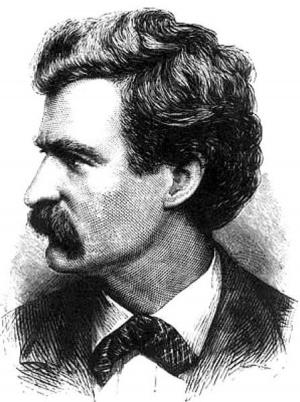A New System of Sword Exercise for Infantry
Nonfiction, Religion & Spirituality, New Age, History, Fiction & Literature| Author: | Sir Richard Francis Burton | ISBN: | 9781465627025 |
| Publisher: | Library of Alexandria | Publication: | March 8, 2015 |
| Imprint: | Language: | English |
| Author: | Sir Richard Francis Burton |
| ISBN: | 9781465627025 |
| Publisher: | Library of Alexandria |
| Publication: | March 8, 2015 |
| Imprint: | |
| Language: | English |
Before proceeding to develop my New Sword Exercise for Infantry, I would offer a few remarks upon the changes proposed in these pages. Whilst the last half century has witnessed an immense improvement in the projectile weapons of the civilized world, the theory and practice of the sabre or cutting arm have remained in statu quo ante; indeed, if there has been any change it is for the worse. The two systems authorized in the British army are completely behind their time. First and senior is the ‘Infantry Sword Exercise’ (with plates): Revised Edition, Adjutant-General’s Office, Horse Guards. London: Printed under the superintendence of H.M. Stationery Office: 1874. The second is the ‘Instructions for the Sword, &c. (without plates), for the use of Cavalry.’ Adjutant-General’s Office, Horse Guards. June, 1871. The latter can be despatched very briefly. Despite the late date, it is as obsolete as the older system; it is, in fact, only the ‘Infantry Exercise’ with the addition of “pursuing practice,” and “post practice”—the latter upon a sort of modern Quintain not made to revolve. So far, so good. The practised swordsman has little to learn when mounted, except the few modifications which he can teach himself. His real study is on foot. But some of the remarks appear not to have been written by a practical hand. For instance, we read (p. 27): “In delivering a forward thrust, very little force is necessary when the horse is in quick motion, as the extension of the arm, with a good direction of the point, will be fully sufficient.” “Fully sufficient”—I should think so! The recruit must be carefully and sedulously taught when meeting the enemy, even at a trot or canter, to use no force whatever, otherwise his sword will bury itself to the hilt, and the swordsman will either be dragged from his horse, or will be compelled to drop his weapon—if he can. Upon this point I may quote my own ‘System of Bayonet Exercise’ (p. 27):— “The instructor must spare no pains in preventing the soldier from using force, especially with the left or guiding arm, as too much exertion generally causes the thrust to miss. A trifling body-stab with the bayonet (I may add with the sword) is sufficient to disable a man; and many a promising young soldier has lost his life by burying his weapon so deep in the enemy’s breast that it could not be withdrawn quickly enough to be used against a second assailant. To prevent this happening, the point must be delivered smartly, with but little exertion of force, more like a dart than a thrust, and instantly afterwards the bayonet must be as smartly withdrawn.” In fact the thrust should consist of two movements executed as nearly simultaneously as possible; and it requires long habit, as the natural man, especially the Englishman, is apt to push home, and to dwell upon his slouching push. The ‘Infantry Sword Exercise’ is nought but a snare and a delusion. Except in pagination, it is the same as the “Revised Edition” of 1845—the only difference or revision that I can detect is the omission of a short sentence in p. 26 of the older issue; it even retains the General Order of Lord Hill, 23rd April, 1842. Thus “Revision” is confined to the plates. In 1845 the figures wear the milk-pail shako widening at the top, the frock coat and the scales; the last edition, dated April, 1874, dons the tall modern chimney-pot, the tightly buttoned tunic with stiff collar and, like its predecessor, the sash and the scabbard. It is no wonder that the figures display an exceeding gêne, the stiffness of pokers, as the phrase is: here we might with profit borrow from the French or Italian artist.
Before proceeding to develop my New Sword Exercise for Infantry, I would offer a few remarks upon the changes proposed in these pages. Whilst the last half century has witnessed an immense improvement in the projectile weapons of the civilized world, the theory and practice of the sabre or cutting arm have remained in statu quo ante; indeed, if there has been any change it is for the worse. The two systems authorized in the British army are completely behind their time. First and senior is the ‘Infantry Sword Exercise’ (with plates): Revised Edition, Adjutant-General’s Office, Horse Guards. London: Printed under the superintendence of H.M. Stationery Office: 1874. The second is the ‘Instructions for the Sword, &c. (without plates), for the use of Cavalry.’ Adjutant-General’s Office, Horse Guards. June, 1871. The latter can be despatched very briefly. Despite the late date, it is as obsolete as the older system; it is, in fact, only the ‘Infantry Exercise’ with the addition of “pursuing practice,” and “post practice”—the latter upon a sort of modern Quintain not made to revolve. So far, so good. The practised swordsman has little to learn when mounted, except the few modifications which he can teach himself. His real study is on foot. But some of the remarks appear not to have been written by a practical hand. For instance, we read (p. 27): “In delivering a forward thrust, very little force is necessary when the horse is in quick motion, as the extension of the arm, with a good direction of the point, will be fully sufficient.” “Fully sufficient”—I should think so! The recruit must be carefully and sedulously taught when meeting the enemy, even at a trot or canter, to use no force whatever, otherwise his sword will bury itself to the hilt, and the swordsman will either be dragged from his horse, or will be compelled to drop his weapon—if he can. Upon this point I may quote my own ‘System of Bayonet Exercise’ (p. 27):— “The instructor must spare no pains in preventing the soldier from using force, especially with the left or guiding arm, as too much exertion generally causes the thrust to miss. A trifling body-stab with the bayonet (I may add with the sword) is sufficient to disable a man; and many a promising young soldier has lost his life by burying his weapon so deep in the enemy’s breast that it could not be withdrawn quickly enough to be used against a second assailant. To prevent this happening, the point must be delivered smartly, with but little exertion of force, more like a dart than a thrust, and instantly afterwards the bayonet must be as smartly withdrawn.” In fact the thrust should consist of two movements executed as nearly simultaneously as possible; and it requires long habit, as the natural man, especially the Englishman, is apt to push home, and to dwell upon his slouching push. The ‘Infantry Sword Exercise’ is nought but a snare and a delusion. Except in pagination, it is the same as the “Revised Edition” of 1845—the only difference or revision that I can detect is the omission of a short sentence in p. 26 of the older issue; it even retains the General Order of Lord Hill, 23rd April, 1842. Thus “Revision” is confined to the plates. In 1845 the figures wear the milk-pail shako widening at the top, the frock coat and the scales; the last edition, dated April, 1874, dons the tall modern chimney-pot, the tightly buttoned tunic with stiff collar and, like its predecessor, the sash and the scabbard. It is no wonder that the figures display an exceeding gêne, the stiffness of pokers, as the phrase is: here we might with profit borrow from the French or Italian artist.















